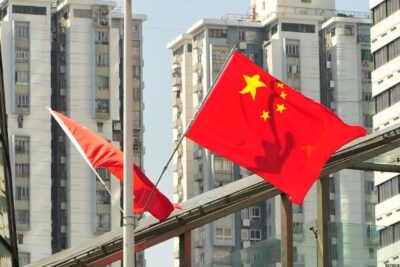China aims to achieve a GDP growth of “around 5%” in 2025, Chinese Premier Li Qiang said when delivering the Government Work Report on Wednesday, in line with the targets for 2023 and 2024, reflecting the government’s intent to stabilize economic growth.
Other main development targets for the year include:
- Urban surveyed unemployment rate around 5.5%, with more than 12 million new urban jobs
- Consumer price index (CPI) increase of around 2%
- Resident income growth in line with economic growth
- Basic balance in international payments
- Grain output of around 700 million tonnes (1.4 trillion jin)
- Energy consumption per unit of GDP reduced by around 3%
- Continued improvement in ecological and environmental quality
Li said that these targets were set after considering both domestic and international factors, balancing needs and possibilities.
The 5% growth target for GDP is necessary for stabilizing employment, preventing risks, and improving people’s livelihoods, while also being supported by the economic growth potential and favorable conditions, and aligns with medium- and long-term development goals, emphasizing a positive and proactive approach, he said.
The urban survey unemployment rate target of around 5.5% reflects the need to increase efforts to stabilize employment in the context of growing structural unemployment issues, he added.
The 5% growth target aligns with market expectations. During the local “two sessions” in January, except for Qinghai province which set a growth target of around 4.5%, the remaining 30 provinces set their growth targets at no less than 5%, with the weighted average growth target across provinces being 5.26%, slightly lower than the 2024 target of 5.41%. Major economic hubs like Beijing and Shanghai set their targets around 5%, leading the market to expect a similar GDP growth target for 2025.
After setting the CPI growth target at around 3% for the past four years, the 2025 target was lowred to around 2%. Li explained that this adjustment aims to improve supply-demand relationships through various policies and reforms, ensuring the price level remains within a reasonable range. Previously, 27 out of 31 provinces had lowered their local CPI growth targets from 3% to around 2%.
In terms of macroeconomic policy orientation, Li said that the government would adhere to a steady progress approach, with progress promoting stability, maintaining a balance of innovation and tradition, and fostering a coordinated system.
Li proposed “strengthening the people-oriented direction of macroeconomic policies” and stressed that the focus of economic policies would shift more toward improving livelihoods and promoting consumption.
Policies will aim to stimulate economic circulation through consumption, lead industrial upgrades through consumption upgrades, and create new economic growth points through improving and securing people’s livelihoods, and meanwhile, more resources will be directed towards “investment in people,” supporting employment expansion, increasing income, reducing burdens on residents, and enhancing consumption incentives, creating a virtuous cycle of economic development and improved living standards, said the Premier.
The government will also strengthen the coordination of fiscal, monetary, employment, industrial, regional, trade, environmental, and regulatory policies, as well as aligning these policies with reform and opening-up measures to enhance policy synergy, he said.
The government will improve the consistency evaluation mechanism for macroeconomic policies and policies will be implemented as early as possible to mitigate uncertainty and maximize policy effectiveness, he added.

